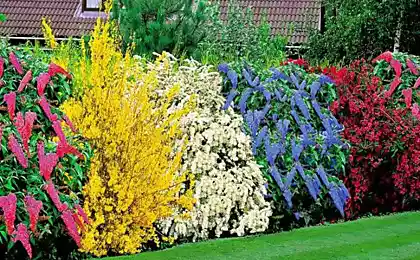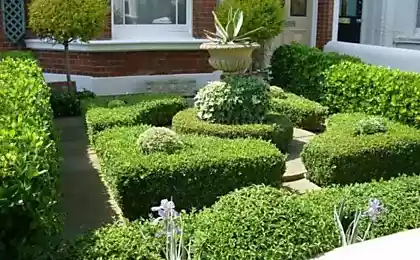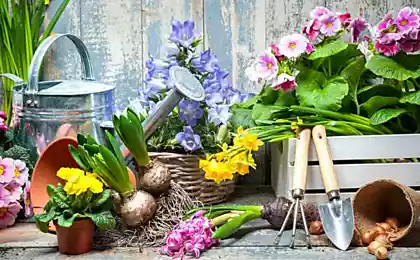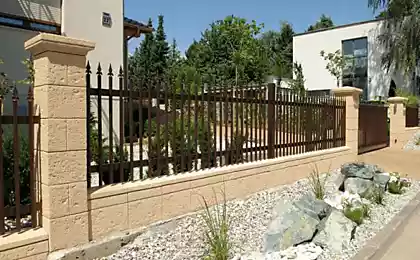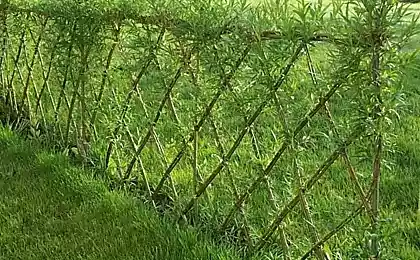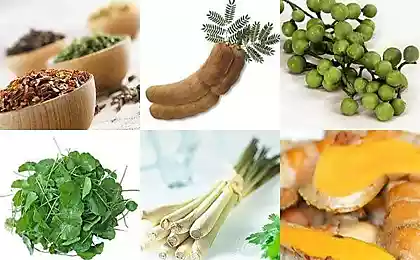698
The choice of plants for hedges
Molded fence kiselnikova create shaped hedges more suited to those tree species that have fairly uniform growth and compact form. Not less important and texture of the leaves. Plants with large leaves usually have a rather coarse structure, so in the fence they don't look too impressive. Small breeds, on the contrary, regular grooming form an elegant smooth surface. The boxwood and yews for hedges began to be imported to St. Petersburg from Holland under Peter I, but our harsh winter has done its job, and all the hedges have died under the snow.

Because it was unthinkable to abandon haired beauties in turn went to the Russian fir, juniper, Linden. Modern gardeners do not neglect the historical experience, and is the pursuit of the exotic is better to pay attention to our tempered climate plants. Special care should be taken to select species suitable for haircuts in Central Russia. Out of all the huge range will suit only the most unpretentious, winter hardy and grow well after pruning and topiary shrubs — hawthorns, cotoneaster, Privet...

Molded hedges of Darren pestrolistnaja tall trees pear Ussuri, turn (plum prickly), Eastern hornbeam, maple riverine is also tolerate pruning, densely overgrown with new shoots. For hedges it is also recommended to use the following plants: barberry, Jasmine, honeysuckle, viburnum, hazel, sea-buckthorn, hazel, rhododendron, rose wrinkled, lilac, currant blood-red, snowberry, and rose.
To design a high green fence using trees and shrubs 3-6 years of age. Do not take saplings of fast-growing species, or in the future will have to regularly spend a lot of effort into taming their growth, since such plants will instantly take designated not only the area but also the neighboring territory. When choosing plants for molding fence the beauty of flowers and fruits should not be the determining criterion, as is likely, pruning will allow the plants to bloom, and consequently, there will be fruit.
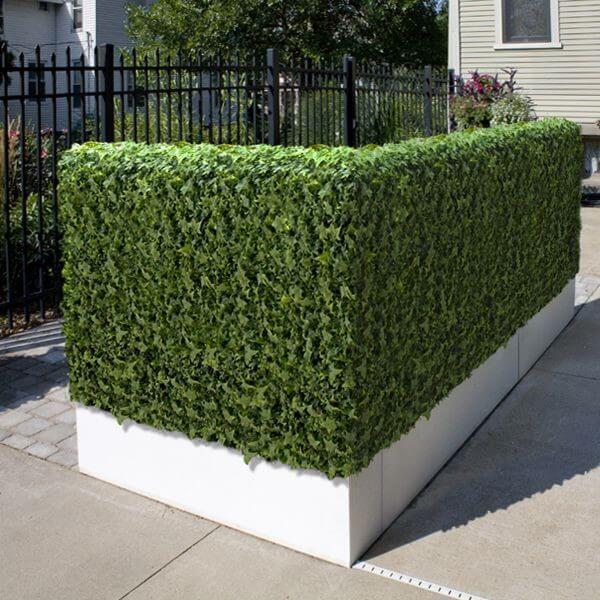
Molded fence elieli there is a desire to create a flowering living fence, then the most suitable option — unshaped hedges. There are a number of plants with which to achieve this is simple: barberry, honeysuckle, Irga, etc. when Planning a hedge should pay attention to the color scheme. Making a bet on the game and brightness of color of foliage is decorative-deciduous breeds, it is better to give preference to a sheared hedge. Decorative leaves with haircut only intensified. This is mainly due to the fact that most foliage forms most clearly the color appears on the leaves of young growing shoots. Trimming the plants encourages the growth thereof. Conifers are subject to the same laws: the growing shoots will have a more saturated color.
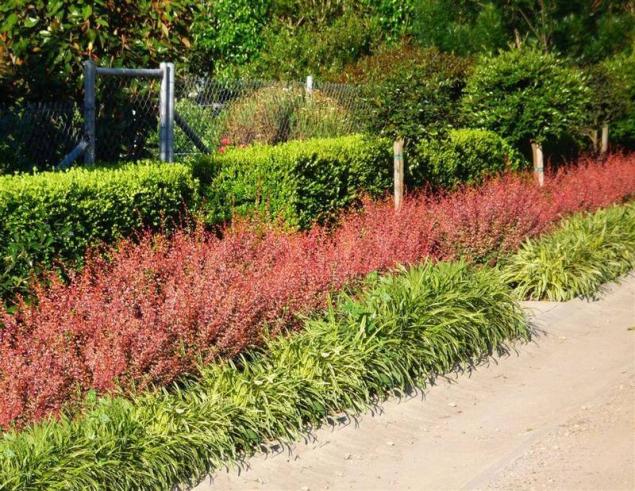
Unshaped hedge of spirea Angulator who do not want a predominance of green or wishes to avoid monotony, can use the mixed type of hedge. The use of plants of the same species, but different varieties with different colored foliage (needles). The modern range presented on the market, allows you not to limit yourself in the fantasy. For example, pure green varieties of Holly or Privet can be mixed with a variegated form, or to plant beech green mixed with purple.
However, when dealing with "mixed" planting caution should be exercised: bright colors quickly become boring. For example, purple hedge, created from only the barberry can quickly "nasality" eyes, and later even cause negative feelings. Before to begin work, the owner should carefully consider what he would like to see your hedge as often willing to care for her, and which combinations of colors are most pleasing to his eye. published
P. S. And remember, only by changing their consumption — together we change the world! © Join us at Facebook , Vkontakte, Odnoklassniki
Source: www.sadovoda.ru

Because it was unthinkable to abandon haired beauties in turn went to the Russian fir, juniper, Linden. Modern gardeners do not neglect the historical experience, and is the pursuit of the exotic is better to pay attention to our tempered climate plants. Special care should be taken to select species suitable for haircuts in Central Russia. Out of all the huge range will suit only the most unpretentious, winter hardy and grow well after pruning and topiary shrubs — hawthorns, cotoneaster, Privet...

Molded hedges of Darren pestrolistnaja tall trees pear Ussuri, turn (plum prickly), Eastern hornbeam, maple riverine is also tolerate pruning, densely overgrown with new shoots. For hedges it is also recommended to use the following plants: barberry, Jasmine, honeysuckle, viburnum, hazel, sea-buckthorn, hazel, rhododendron, rose wrinkled, lilac, currant blood-red, snowberry, and rose.
To design a high green fence using trees and shrubs 3-6 years of age. Do not take saplings of fast-growing species, or in the future will have to regularly spend a lot of effort into taming their growth, since such plants will instantly take designated not only the area but also the neighboring territory. When choosing plants for molding fence the beauty of flowers and fruits should not be the determining criterion, as is likely, pruning will allow the plants to bloom, and consequently, there will be fruit.

Molded fence elieli there is a desire to create a flowering living fence, then the most suitable option — unshaped hedges. There are a number of plants with which to achieve this is simple: barberry, honeysuckle, Irga, etc. when Planning a hedge should pay attention to the color scheme. Making a bet on the game and brightness of color of foliage is decorative-deciduous breeds, it is better to give preference to a sheared hedge. Decorative leaves with haircut only intensified. This is mainly due to the fact that most foliage forms most clearly the color appears on the leaves of young growing shoots. Trimming the plants encourages the growth thereof. Conifers are subject to the same laws: the growing shoots will have a more saturated color.

Unshaped hedge of spirea Angulator who do not want a predominance of green or wishes to avoid monotony, can use the mixed type of hedge. The use of plants of the same species, but different varieties with different colored foliage (needles). The modern range presented on the market, allows you not to limit yourself in the fantasy. For example, pure green varieties of Holly or Privet can be mixed with a variegated form, or to plant beech green mixed with purple.
However, when dealing with "mixed" planting caution should be exercised: bright colors quickly become boring. For example, purple hedge, created from only the barberry can quickly "nasality" eyes, and later even cause negative feelings. Before to begin work, the owner should carefully consider what he would like to see your hedge as often willing to care for her, and which combinations of colors are most pleasing to his eye. published
P. S. And remember, only by changing their consumption — together we change the world! © Join us at Facebook , Vkontakte, Odnoklassniki
Source: www.sadovoda.ru


